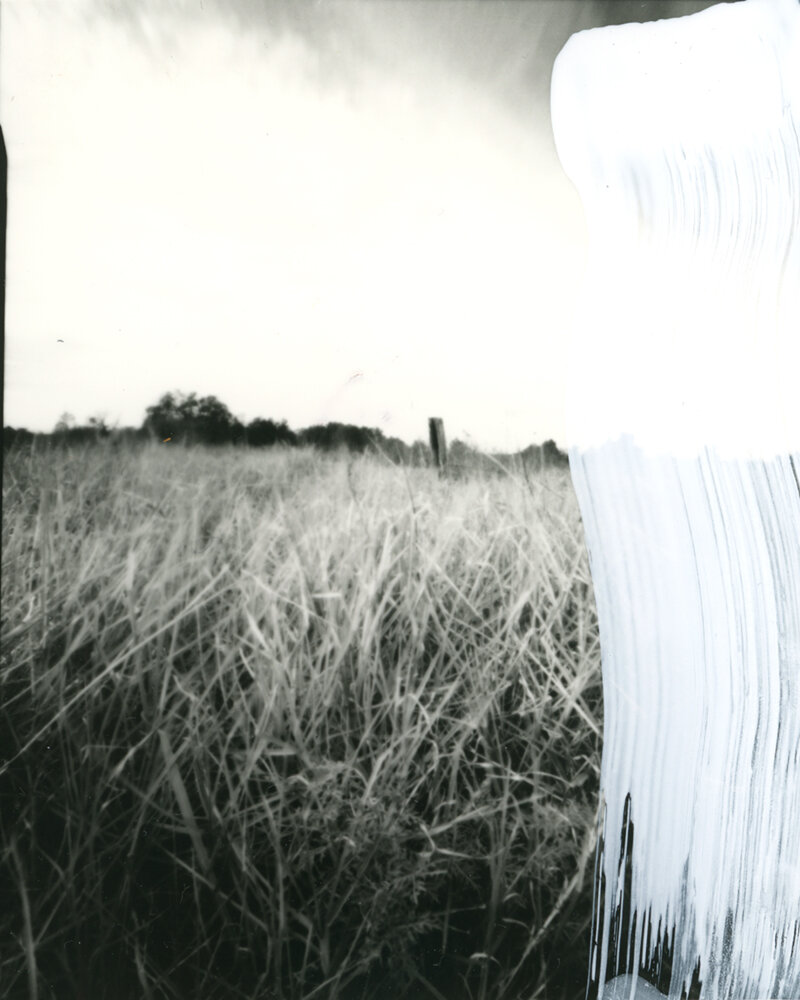Poignant Pics no. 25 // Diana Nicholette Jeon on Chris Byrnes’ Broken Landscape
Welcome to no. 25 in our series Poignant Pics, where we've asked photo curators, educators, collectors, and makers to share a brief essay on a photo that has significantly changed the way they think or look at the world.
In this issue, our editor Diana Nicholette Jeon writes about Chris Byrnes’ image, Broken Landscape, and how she felt when seeing it for the first time.
SOMEONE IS HAVING WAY TOO MUCH FUN. I’M JEALOUS.
Way back in Photo 101, I was that classic instructor's nightmare: the student who could not burn without creating a black spot larger than the underexposed area it was meant to fix. Spotting? Who cares about a little lint! Gimme the fun stuff! I was utterly determined to do things they don’t teach in 101, like exposing through a variety of substances put onto acetate, creating the Sabattier effect, or using Marshall Oils to hand-color. I love these things. Yet for the majority of my art career, I have had little to no access to a darkroom.
I am a huge fan of pinhole and plastic lens work, an even bigger fan of mixed media photographic work, and a lover of the mark of the human hand within a photographic image.
As soon as I saw Broken Landscape, I knew someone was having a great deal of fun. I said to myself, “Wow, this is cool and interesting! She is hitting all the buttons I love with this one!”
Broken Landscape
I suspect it’s no surprise that my favorite book about photography is Robert Hirsch’s Transformational Photography: Handmade Imagemaking Since 1960. In the chapter considering Betty Hahn, Hirsch noted that “Hahn’s perceptions disrupt the images iconic associations and the notion of editioning identical pieces to initiate an amalgam of interpretations, revealing something beyond the simple optical ‘what is’ that does not abide by a playbook of what a picture should look like.” I feel Chris Byrnes channeling the spirit of Hahn via this work. Even via my phone screen, it was clear to me that there was a type of painterly intervention happening here. It made me curious to know more about what she was doing.
Chris told me the work was created from a single pinhole negative that was contact printed then selectively bleached, toned, and to which she added a layer of acrylic emulsion. Each repetition of the process took on a life of its own. She created this work for an exhibition entitled Reimagining the Canon, where 18 artists from Australia, UK, Ireland, and Scotland were invited to respond to the question “If you could write yourself into the canon of western art history, what would that look like?” Chris responded by invoking the notion of living as a female inside a broken landscape, which for her encompasses the disintegration of the socio-political and environmental realms in addition to the art world.
Upon learning all this, I wished that Chris had been my peer in Photography 101; I know that we would have had some serious fun together. Those of you that also love this kind of darkroom experimentation may wish you had been in the darkroom with Chris, too.
- Diana Nicholette Jeon
Note: Because the entirety of the gorgeous and detailed pentaptych is difficult to see in detail at this scale on the web, I asked Chris for individual images of each section in order to show more detail. Clicking on the images below will bring up a lightbox.
Artist Bio
Chris Byrnes was born in Newcastle Australia into a large lower economic family of seven children. Her mother instilled a love of reading as a means of understanding the world and a means for self-education along with the joy (and necessity) of making things. In the early years, the radio was entertainment encouraging listening and imagining a story rather than seeing a visual image instantly. While beginning art studies in her teens Chris found herself returning home to raise her son as a single parent. Working in health administration supported her small family while artistic pursuits were always significant, attending night classes, workshops and reading about art at various stages. Later in life, placing her need to be involved in art at a high priority meant seeking employment at the University of Newcastle. This provided the opportunity and space to study part-time while employed full-time, resulting in completing a Bachelor of Fine Art Honours in 2010. Chris joined community groups to assist in her art-making practice and became an active member of the Newcastle Printmakers Workshop Inc. This progressed to volunteering her support to Maitland Art Gallery, Newcastle Community Arts Centre, Newcastle Art Space Gallery, and the Australian Centre for Photography in recent times. The significant loss of the family matriarch in 2014 found Chris considering both her place in the world and her commitment to art. Her mother Eleanor said do what you need to do and leave nothing important undone. Chris returned to full-time study completing a Master of Fine Art at the National Art School in Sydney in 2017. Her work has now been exhibited across Australia and within the global community. Chris continues investigations into the magic of photography from her home base in Newcastle, Australia, and has recently extended her research also into drawing through photography. Her work continues to embrace an ‘economy of means’ as a prominent component.
My mantra is simple:
Without light, we cannot exist
Without light, I have no image
Without an image, I cannot exist
I love photography
More of her work may be found on her website.
Diana Nicholette Jeon is an artist based in Hawai‘i and an editor at One Twelve publications.






